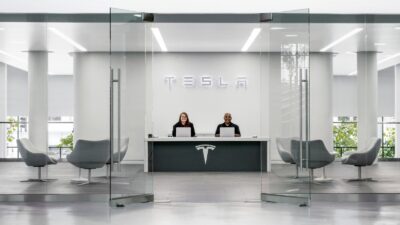The fall in consumer demand following the stock market crash so far this year has been high. It has impacted sectors to differing degrees, but certainly has hit both the luxury market and automobiles hard. Aston Martin Lagonda (LSE: AML) is a luxury car manufacturer that had endured plenty of problems before the crisis, so has seen a big hit to its share price this year.
Job cuts = short-term pain
Aston Martin has now said it’s going to cut up to 500 jobs. The total workforce is estimated to be 2,450, so this is a big chunk of its total. We don’t yet know where the cuts will be focused. However, given the lack of demand for the car,s along with the advance of manufacturing automation, I think it could be focused around the manufacturing plants.
Any job losses are awful for those who go through the process, but the firm commented that the decision would “bring the cost base into line with reduced sports car production levels, consistent with restoring profitability“. This will mean some short-term pain for the firm and investors. The Aston Martin share price is down almost 3% today as I write.
Should you invest £1,000 in Lloyds Banking Group right now?
When investing expert Mark Rogers has a stock tip, it can pay to listen. After all, the flagship Motley Fool Share Advisor newsletter he has run for nearly a decade has provided thousands of paying members with top stock recommendations from the UK and US markets. And right now, Mark thinks there are 6 standout stocks that investors should consider buying. Want to see if Lloyds Banking Group made the list?
I wrote back in November how I was still pessimistic on the share price, given the sensitivity of the UK-based firm to Brexit. Added to this was the fact that Aston only makes around 6,500 cars a year. It therefore doesn’t take much to dent revenue from sales.
So what has changed now? Well, I’d argue that the Brexit situation is less uncertain than it was back in November. The UK has a fairly clear stance that the transition period will only last until the end of this year, with no extension. This allows Aston to prepare for that eventuality.
Cost cutting = longer-term positive
The main reason I think the job cut news is a longer-term positive for the share price is the message it sends out. It acknowledges that there’s a need to reduce costs, and that there’s an oversupply of production versus demand. It sounds obvious, but taking note of problems and addressing them is something not all boards actually do! The board will also be conscious of moving on from the pre-tax £104m loss from last year and working on restoring profitability.
The cuts and reduced production could allow Aston to take one of two paths, both of which could be successful. It could keep production low for the long term, allowing the cars to regain the ‘exclusivity’ factor. This will help keep prices high in both the new and used markets.
Alternatively, Aston could potentially pass on some of the reduced costs to the customer via a lower price. The entry level Aston Martin Vantage currently starts at £125,000. The old-shape Vantage from only a few years back retailed at £20,000 less than that. In the coming years, if prices are reduced but production increased, this could be another way to become profitable again.
The share price at current levels does look appealing to me to buy into. Granted, it’s a contrarian buy for a longer-term turnaround. But with billionaire Lawrence Stroll and Mercedes F1 boss Toto Wolff investing only a couple of months ago, I feel I’m in good company.







